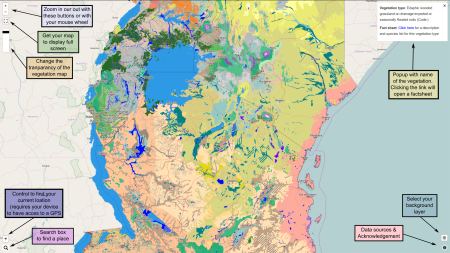- So, how well did that Drought Tolerant Maize for Africa project do, anyway? Meeting to be held to find out. In the meantime, here’s the infographic.
- My friend Bob Reid gets an award for his contribution to forage genetic resources conservation and use.
- Finally doing something about arabica’s lack of diversity.
- Digitizing herbarium collections? There’s a workflow for that.
- Remember the good old days of nutritions veggies? “[A]ny real declines [in nutrient content] are generally most easily explained by changes in cultivated varieties.”
- “…what if hybrids were farmed as carefully & conscientiously as the finest vinifera grapes in a historical vineyard?”
- Wild foods from dry forests are good for you. Wet forest not totally useless either though.
- Bats, earthworms, enough of this biodiversity, we get it already.
- Bittman puts his money where his mouth is.
Nibbles: Kew video, Cannabis taxonomy, Diet change, School beer nazis, Pawnee corn, Salicornia, Oz seed forum, Cuban root forum
- Really stunning video on plant taxonomy through the ages.
- Growers often get cannabis taxonomy wrong. Where’s the video on that?
- Kale or steak? Why not both?
- Enterprising pupils make beer from oats/sorghum breakfast cereal.
- Can always do with more news on Pawnee corn.
- Let them eat Salicornia.
- Australian Seed Bank Partnership organizing a National Seed Science Forum in March 2016.
- The Instituto de Investigaciones de Viandas Tropicales is organizing the Third International Symposium on Roots, Rhizomes, Tubers, Plantains, Bananas and Papayas in Cuba, 20-23 October 2015.
The right tree in the right place
Much excitement at the World Forestry Congress yesterday over the launch of the World Agroforestry Center’s fancy-shmanzy new app.
New app 4 identifying+selecting the right tree launched today! Try it. http://t.co/kLUCvjFJAN #Forests2015 pic.twitter.com/mPq4EG7lpw
— CIFOR-ICRAF (@CIFOR_ICRAF) September 7, 2015
Long story short, it’s version 2 of a potential natural vegetation map of eastern and southern Africa. ((Kindt R, van Breugel P, Orwa C, Lillesø JPB, Jamnadass R and Graudal L (2015) Useful tree species for Eastern Africa: a species selection tool based on the Vegetationmap4africa map. Version 2.0. World Agroforestry Centre (ICRAF) and Forest & Landscape Denmark. http://vegetationmap4africa.org)) You can consult it in a browser, including on mobile devices, in Google Earth, or in your own GIS. Once you know where you are, or where you’d like to grown some trees anyway, you can get an idea of the natural vegetation there, and of what species might do well, for a variety of different purposes (honey production, say, or firewood).

Once you’ve selected a likely tree, you can get more information on it from ICRAF’s Agroforestry Species Dashboard. It’ll need a bit more road-testing than I have time for just at the moment, but it looks promising at first blush. One immediate reaction I do have is that it’s not possible to look for species that fulfil multiple functions: honey production and firewood, in other words. But I may be doing the thing an injustice.
Nibbles: Genebank videos, Genebank QMS, Leakey vid, Oz Oryza, Plant ID app, CGIAR saga, PNG food crisis, Impressive melons, Quinoa, Asian sheep diversity, Kenyan CSA
- Nice video on the Millennium Seed Bank at Kew. Compare and contrast with Ft Collins. Or CIAT’s genebank for that matter.
- Quality video on quality management systems in genebanks. No doubt followed to the letter by the three above.
- Video of webinar by Roger Leakey explaining how trees will save us: “The Global Food Crisis: Can we Heal a Divided and Ailing World?”
- Collecting wild rice in Australia. No video, alas, but nice pics.
- App to identify plants for leaves. If ever a video was needed…
- The latest on the CGIAR re-re-structuring. Hollywood interested, I’m told.
- Meanwhile, El Niño beginning to affect PNG.
- Which doesn’t stop a watermelon going for thousands in Japan.
- Hope El Niño doesn’t affect Colombia’s plans to stuff it to poor Bolivian quinoa farmers.
- Enough plants already. Asian sheep more diverse than previously thought, thanks to both migration from Fertile Crescent and indigenous development and back-dispersal.
- Not to mention “Surprising ways Kenyans are embracing climate-smart agriculture“.
Nibbles: Weird veggies, National Center for Genetic Resources Preservation, Indian litchis, Colony Collapse Disorder
- Funky vegetables from around the world.
- Ft Collins genebank on CNN.
- India gets a litchi genebank. None of that in Ft Collins.
- Honeybees get help from museum collections.